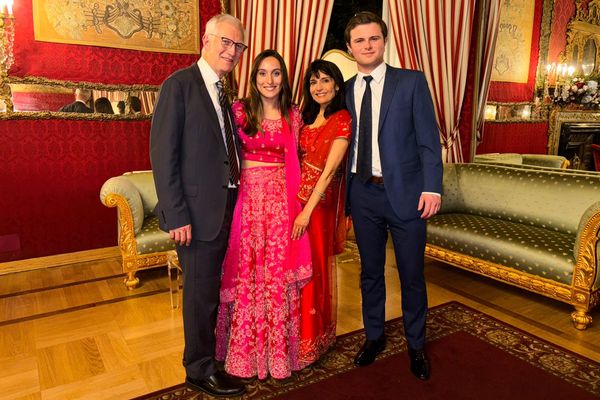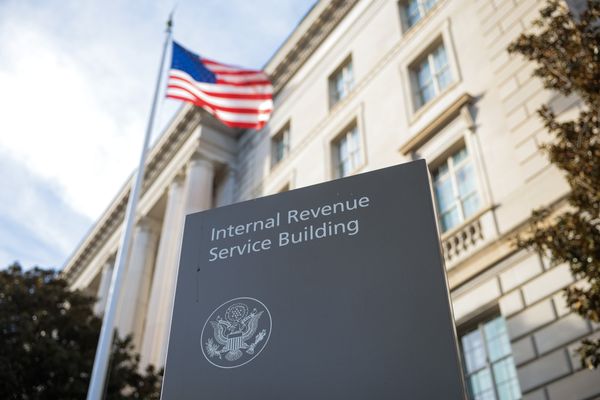
“Almost every client I talk to has a war room,” says Mary Rollman, KPMG’s U.S. supply-chain leader. “They get a team spun up, and the members have completely dropped their day job. Their job now is to watch the news and see what comes out next, and quickly be able to present to leadership.”
That’s life in the chaotic Great Trade War of 2025—but companies aren’t waging the war. They’re trying to survive and thrive as governments radically remake the global business environment. At the heart of that challenge is the supply chain, and exactly how to transform it is Topic A in all those war rooms. “This is a unique time in supply-chain history,” says Abe Eshkenazi, CEO of the Association for Supply Chain Management. “It’s something we have never done at this level.”
Everyone knew something big was looming—President Trump had often told the world he would impose more and heavier tariffs—but hardly anyone was prepared for the magnitude of the tariffs he imposed on 57 countries on April 2. They ranged from 11% (on Cameroon and Democratic Republic of the Congo) to 49% (on Cambodia), raising the average effective U.S. tariff rate to 22.5%—the highest since 1909. A week later he paused most of those tariffs, reducing them to 10% for all countries except China, for which the tariff at this writing is 145%. No one alive has any experience managing a U.S. business in that environment.
So far, most U.S. companies seem to be taking small steps. Some are accelerating existing plans to bring manufacturing to the U.S., says Rollman. Some are holding imports at the border as tariffs change. But “that is the minority,” she says. “Most companies I work with are working to model options and scenarios but not making any major changes now.”
Adapting won’t be easy. In the now-gone globalized economy, cars assembled in the U.S. included parts from dozens of countries, for example. Some parts crossed borders multiple times as they were built. Ford says it uses parts made of over 1,000 materials supplied by some 1,400 suppliers. Redesigning that kind of supply chain will be mind-boggling.

A few industries had to scrap their supply chains after Trump’s tariffs in his first term, but that experience may not give them much of an advantage this time. “One industry we’re seeing that was heavily impacted was the textile and apparel industry,” says Andrew Siciliano, head of KPMG’s U.S. and global trade and customs practices. “Many companies moved out of China in 2018,” after Trump imposed tariffs in his first term, “and moved to Vietnam, Thailand, India, and Malaysia.” As of April 2, all four of those countries faced high tariffs. They’re now down to 10%, and there’s no telling what tariffs they will face when the pause expires.
Now add yet another layer of complexity: Will today’s tariff be the same tomorrow? The pause was a surprise, and history says more surprises are surely ahead. In his first term as president, Trump announced a new tariff on metals from Brazil, for example, then canceled it days later after speaking with then Brazilian President Jair Bolsonaro. A similar procedure is shaping up again, this time on a much larger scale. Trump recently told reporters on Air Force One that the tariffs give the U.S. “great powers to negotiate” and that “I spoke to a lot of Europeans, Asians, all over the world. They’re dying to make a deal.” Other officials, including U.S. Trade Representative Jamieson Greer, have signaled the administration is open to making deals. The tariffs announced on April 2 are apparently opening bids in a negotiation, which means business leaders must now build new supply chains based on tariffs that could change at any time with little warning.
That is exactly the environment in which supply chains work badly. “The supply chain depends on consistency, not only on data, but on predictability,” says Eshkenazi. “If we know what the demand is, then we know how to sequence supply and ordering and inventories and logistics. As in financial markets, we don’t deal well with uncertainty.”
Compounding the difficulty, big changes in supply chains often require long-term responses. Automakers need at least 2 ½ years to build a U.S. manufacturing facility, for example, and some plants have required three to five years. By the time they’re running, what tariffs on which countries will automakers be trying to avoid? Will that billion-dollar investment have turned out to be wise? Or consider the ingredients for generic drugs, most of which are made in China and India. “It’s been that way for 20 years,” says Rollman. Producing them in the U.S. would cost 35% more, she says, but building U.S. plants could take up to two years. Until then, the ingredients would have to be imported at prices that could be even higher—no one knows how much—depending on tariffs negotiated with China and India.
As leaders struggle to make high-stakes decisions, they’re frustrated by the difficulty of discerning Trump’s long-term objectives. Republican Sen. John Kennedy of Louisiana recently confessed to the Wall Street Journal, “I just don’t know what his goal is right now.” Eshkenazi wonders, “What is it that we’re trying to accomplish through all these tariffs?” They may want to remember what Trump wrote in his 2015 book Crippled America: “I don’t want people to know exactly what I’m doing—or thinking. I like being unpredictable. It keeps them off-balance.”
With supply-chain executives and others, he is certainly succeeding.







